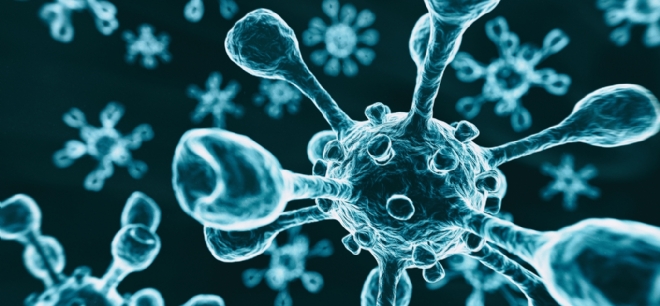Intellectual property can incentivize or hinder companies as they race to respond to the coronavirus pandemic. Hooper, Lundy & Bookman attorneys look at pressing issues surrounding companies’ efforts to develop and manufacture sufficient amounts of diagnostic tests, treatments, and vaccines. The coronavirus pandemic has spurred many in the life science and med-tech communities to invest resources into developing new solutions for testing, diagnosing and treating Covid-19. As we observed with the initial lag in testing for Covid-19 in the U.S., once companies innovate solutions, the next challenge will be to produce large quantities in short periods of time. The speed with which the pandemic has moved—and with which companies have raced to innovate and manufacture—presents novel challenges for our legal system. The FDA has approved new tests for Covid-19 on an emergency basis. Many companies have joined the battle by testing existing drugs as potential therapies, evaluating new drugs, and racing to develop and test vaccines for Covid-19. What role will intellectual property play in incentivizing (or hindering) companies as they race to develop—and manufacture—sufficient amounts of diagnostic tests, treatments, and vaccines? Although we still are in the early stages of this crisis in the U.S., a few pressing issues and questions have emerged. First, as is often the case when Americans are faced with our most serious challenges, we have seen cooperation between government, academia, and industry, even among the fiercest competitors. Collaboration is the watchword of the day for responsible corporate citizens, but will that extend to allowing others (especially competitors) to use your IP—especially IP that took years and millions of dollars to develop? A group of scientists, lawyers and entrepreneurs hope so. The “Open COVID Pledge Working Group” has spearheaded a push to convince key players—from corporations and foundations to institutions and individuals—to permit all others to use their patents and IP under a free license. The proposed license can be accessed by visiting https://opencovidpledge.org/license/v1-0/. The license is limited in duration: it would be retroactive to Dec. 31, 2019, and would terminate one year after the World Health Organization declares that the global pandemic is over. Second, the U.S. government has committed hundreds of millions of dollars to U.S. companies in an effort to develop treatments and vaccines through NIH grants and other sources. What are the implications if a company develops a new treatment or vaccine that is effective for Covid-19 but cannot (or refuses to) produce sufficient quantities to meet demand? Or what if the company limits supply to drive up prices or refuses to make the product affordable to all Americans? What are the options for the U.S. government under those (very unlikely) circumstances? Two tools are available to the government in such situations, one of which has existed for 40 years, but has never been used successfully. Under the Bayh-Dole Act (enacted in 1980), when a company fails to produce a product that has been developed using federal funds, or if it cannot produce sufficient quantities to reasonably satisfy the “health and safety needs” of the U.S., the government can exercise what are known as “march-in rights” compelling the patent holder to grant a license under the patent(s) to others. Although there has never been a successful petition for march-in rights under Bayh-Dole, the unprecedented nature of this national health emergency could change that. For patents developed without federal funds, the second (and more likely) tool at the administration’s disposal is 28 U.S.C. §1498. Under that section, a patented invention may be “used or manufactured by or for the United States without” a license from the patent owner, provided the government gives “reasonable and entire compensation for such use” to the patent owner for it. Note that Section 1498 permits a product to be manufactured “for” the U.S. by contractors or “any firm or corporation.” Thus, other companies (whether U.S.-based or foreign) can produce a product for the U.S. government at its request even though the product is covered by their competitor’s U.S. patent(s). This mechanism, often described as the “eminent domain” of intellectual property law, has been used by the U.S. to pressure patent holders into price or production concessions. Although “reasonable and entire compensation” is not defined in the statute, Section 1498 states that such compensation shall be determined by the Court of Federal Claims following a lawsuit by the patent holder against the U.S. A third intellectual property-related tool the U.S. government can use is to award tax incentives and extended patent protection to companies who develop products that test for, treat and immunize against Covid-19. An analogy can be made to incentives provided by the government to encourage companies to innovate so-called orphan drugs (developed to treat a condition so rare that it would not be profitable to produce but for government assistance or incentives). The U.S. grants tax incentives and enhanced patent protection and marketing rights to such companies. Congress is exploring implementing such incentives now with respect to Covid-19. Sen. Tom Cotton (R-Ark.) has proposed legislation that would increase the patent term covering innovations related to medical devices and pharmaceuticals to treat Covid-19. Notably, Cotton’s proposal would apply to new and existing devices and drugs. Although in its very early stages, this proposal illustrates the intellectual property-related levers the U.S. can use to incentivize innovation and help stem this crisis. Finally, the U.S. Patent and Trademark Office (PTO) has been given new authority under the CARES Act to “toll, waive, adjust or modify, any timing established by” the Patent Act (or regulations promulgated thereunder) during the period of the current coronavirus emergency. The PTO announced March 31that it has extended certain deadlines and delayed payment of various fees due from applicants and patent holders for the duration of this crisis. These types of measures implemented by the PTO—while seemingly minor—allow companies to focus their resources on innovating methods of diagnosing, treating and vaccinating against Covid-19. For further information, please contact Drew Woodmansee and Catherine Wicker in our San Diego office; or your regular Hooper, Lundy & Bookman contact. This article was originally published in Bloomberg Law Health Law & Business News on April 9, 2020. Reproduced with permission from Copyright 2020 The Bureau of National Affairs, Inc. (800-372-1033) www.bloombergindustry.comCooperation, Collaboration Key
U.S. Commits Hundreds of Millions
Tax Incentives and Extended Patent Protection
Professional

